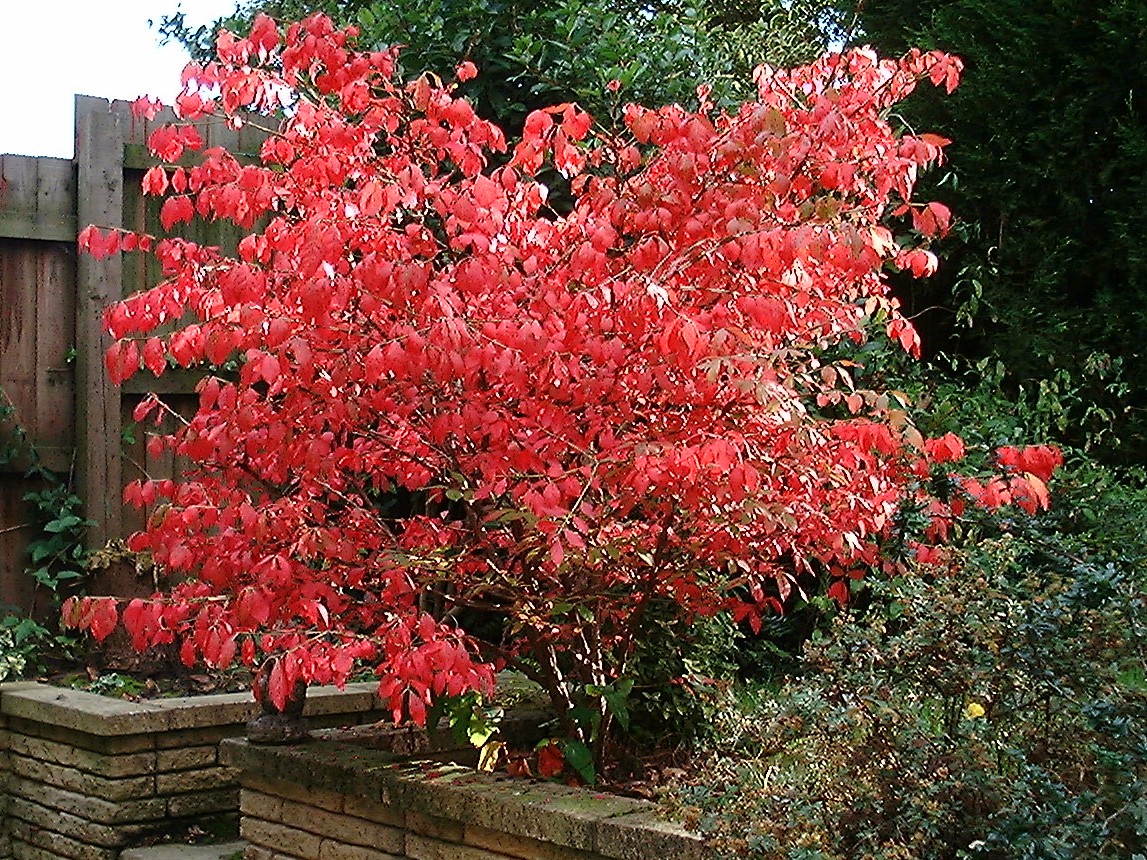Burning bush/winged euonymus (Euonymus alatus)
Help support a diverse and thriving Mount Desert Island by taking action in your backyard!
Help support a diverse and thriving Mount Desert Island by taking action in your backyard!
This popular ornamental shrub is found in forests, forest edges, and open areas. They have small light green flowers in spring and red fruits framed by purple coverings in fall. Their simple opposite leaves turn bright red in fall. Their square, green, twigs often display corky “wings.”

(Photo by Famartin – Own work, CC BY-SA 4.0)

Burning bush/winged euonymus (Euonymus alatus) (Photo by Chris Barton/Gif absarnt – Own work, CC BY-SA 3.0)
Remove any time after leaf-out in early spring.
Dispose of plants responsibly.
Burning bush is likely to re-sprout. Repeat the above methods as needed to eliminate plants from your property.
Consider replacing with native shrubs with bright fall color like highbush blueberry (Vaccinium corymbosum)
Learn even more about burning bush on the maine.gov website: burning bush